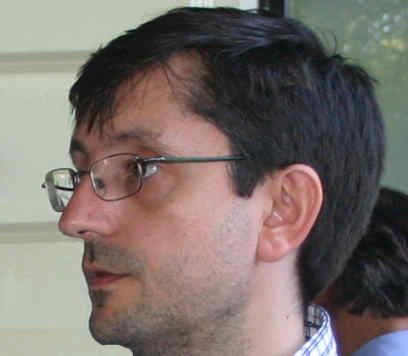Community detection, roles and information flows in social networks for the analysis of public opinion and patient engagement in public health policy
Professor Sophia Yaliraki (Chemistry), Professor Ara Darzi (IGHI, Surgery/Cancer)
Others: Dr Mariano Beguerisse (Mathematical Institute, University of Oxford), Sabine Vuik (Surgery & Cancer) Guillermo Garduno (Sinnia, Mexico)
Policy makers need to engage the public and social media provide a platform to interact directly with a large audience, addressing specific issues and questions. However, it is critical to understand the different communities and conversations on Twitter and other social media, so as to target them appropriately. As pilot programmes for the NHS are implemented, we aim to develop mathematical and computational tools to impact the analysis of directed networks derived from large, complex social datasets.
The mathematical challenges involve the creation of representative networks from multi-scale and multi-label data, and the analysis in terms of dynamical communities and roles without a priori specifications. Our mathematical description will be aimed at creating personalised viewpoints of information flow from particular users, establishing tkey linkers between conversations and interest communities. The analysis of textual content in tweets will lead to definitions of topic timelines bringing tools from textual and information retrieval methods to connect with the graph theoretical analysis of social networks.
The datasets analysed will be collected in conjunction with industrial and medical partners (Sinnia and the Imperial Big Data Analysis Unit at IGHI) following topics of current social, economical and clinical interest in healthcare analytics. Sinnia and the BDAU will provide support for in-depth data collection, analysis and processing towards the creation of computational interfaces that will allow the use of the outcomes by healthcare specialists and public health policymakers

The #care.data debate on Twitter. Analysis of the directed graph of followers (left) reveals communities of defined by their interests (healthcare professionals, media/data activists, politics, US-centric). Analysis of the retweet network (right) reveals conversations with unequal participation of the different user groups.
The Team
Leaders
Professor Sophia Yaliraki
/prod01/channel_3/media/migration/research-groups/52641--tojpeg_1469628192607_x4.jpg)
Professor Sophia Yaliraki
Chemistry
Professor Ara Darzi
/prod01/channel_3/media/migration/research-groups/darzi--tojpeg_1469628233763_x4.jpg)
Professor Ara Darzi
Surgery and Cancer
Others
Dr Mariano Beguerisse
/prod01/channel_3/media/migration/research-groups/picMBD--tojpeg_1469713967261_x4.jpg)
Dr Mariano Beguerisse
Mathematical Institute, Oxford
Guillermo Garduno
/prod01/channel_3/media/migration/research-groups/Placeholder--tojpeg_1469628697675_x4.jpg)
Guillermo Garduno
Sinnia
Ms Sabine Vuik
/prod01/channel_3/media/migration/research-groups/icimages--tojpeg_1469801990294_x4.jpg)
Ms Sabine Vuik
Surgery and Cancer
--tojpeg_1538046453332_x4.jpg)
